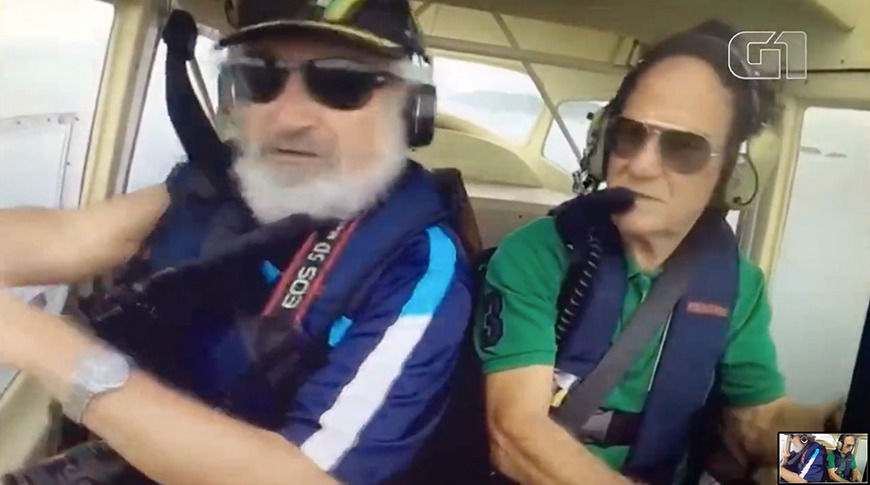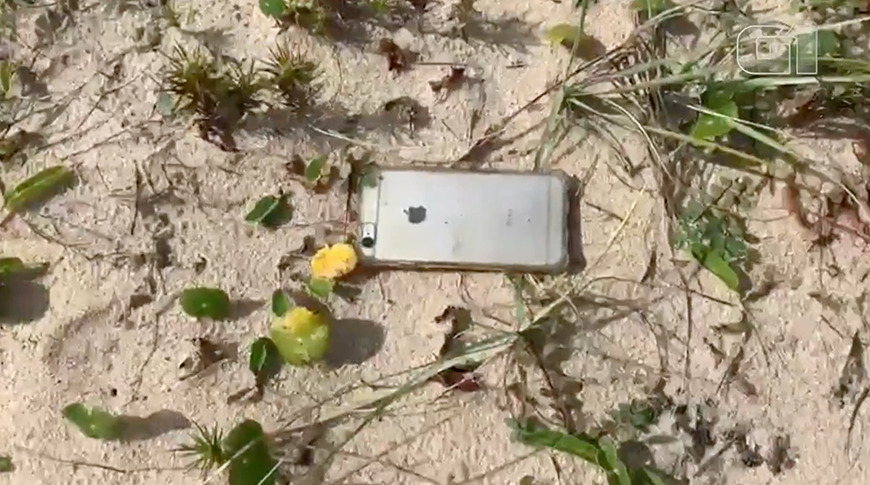An iPhone 6S tumbled out of an airplane window during a flyby of the Lakes Region of Rio de Janeiro and was later recovered in working condition on the beach.
The phone belonged to environmentalist and filmmaker Ernesto Galiotto, who was flying nearly 1000 feet above Praia do Peru in Brazil when it fell from his hand.
The flight was to commemorate the renewal of the International Blue Flag Seal, a symbol that recognizes the environmental quality of the beach. Authorities had restricted the event to officials only to avoid coronavirus transmission.
In the video, available on Globo's site, shows the moment where the phone fell.
The fall lasted about 15 seconds before the phone landed on a sandbar. Galiotto said the phone had landed face-down, and the only damage was to the phone's screen protector. Galiotto and a friend recovered the phone the next morning after tracking it via GPS.
This isn't the first time an iPhone has survived such a fall. In 2018, an iPhone was recovered in working condition after it fell 1,000 feet during a ride in a vintage biplane.
That same year, an iPhone 7 Plus survived a 300-foot drop from an amusement park ride in Orlando, Florida.
Again, in 2018, an iPhone 7 took a two-day dip in the ocean after being dropped from a boat off the coast of Dorset, England. The phone — which was housed in a waterproof case — was recovered with 84 percent battery life and returned to the owner.
 Amber Neely
Amber Neely









 Christine McKee
Christine McKee

 William Gallagher
William Gallagher
 Malcolm Owen
Malcolm Owen

 Andrew Orr
Andrew Orr









10 Comments
That's impressive, but not all that surprising - especially considering it landed on a sandbar. Depending on the orientation of the iPhone as it fell (and other factors), it might have had a terminal velocity of something like 10 m/s. If that were the case, it would be something like dropping it from the roof of a 2-story house. And if the orientation was different such that it reached a much higher terminal velocity, then it probably would have landed on an edge.
Amazing my Xs cracked from a 3 foot drop.
In a fluid there will always be a terminal velocity, right? Some factors like air density and orientation during the fall will be unknowns. We can get mass and a few other things.
But since the fall from ~1000' took 15 seconds, wouldn't the terminal velocity be greater than 10m/s? Maybe closer to 20m/s?
A sky diver can change his velocity but I wouldn't think a phone would do anything other than tumble all the way down. Being dropped I'd think there'd be little to no acceleration and its speed would stabilize quickly.
Obviously I've never studied physics or fluid dynamics so any clarification would be welcome.
... the iPhone appears in a transparent protective case, and the video is turbulent, so turbulence drag may have helped a bit too...